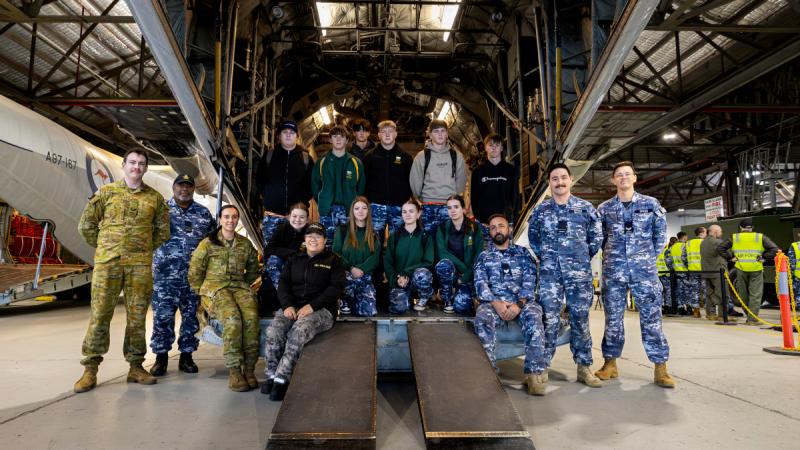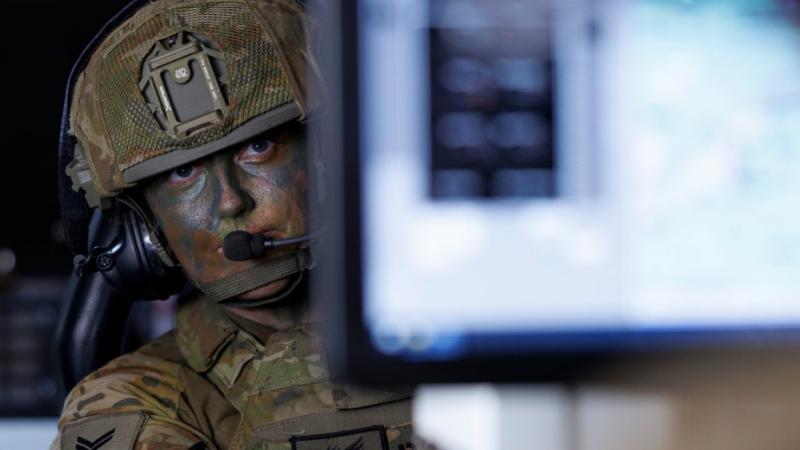12 October 2020
With a caring demeanour seemingly undaunted by blood and guts, Major Erica van Ash radiates a nurse's aura.
She cut her teeth at Sydney’s Westmead Hospital in 1993, when holding a patient’s hand and having a chat was a therapeutic treatment.
“I quite liked that it was really simple, nursing at its core is a simple profession,” she said.
“It’s become far more complex as technology emerges. The face of nursing changes but the fundamentals are still the same; understanding human vulnerability.”
As a registered nurse Major van Ash saw Sydney’s richest and poorest come through the trauma and emergency department at St Vincent’s Hospital near King’s Cross.
She worked in the UK’s St Thomas Hospital where she did her post graduate clinical intensive care study at Kings College.
“It was less frontline, but far more technical. It’s really a science and an art,” she said.
“There’s multi organ failure, complex bloodwork and systems; you really have to be on your game and know your stuff.”
Major van Ash considered giving up civilian nursing when a man on a two-week cocaine bender banged on her triage desk window at 2am complaining of chest pains.
“He was having a heart attack, he needed to go straight to the operating theatre and have it unblocked,” she said.
It was less frontline, but far more technical. It’s really a science and an art.
“I remember thinking ‘it’s so wrong. It’s the middle of the night. I don’t want to be giving all this time to people that I don’t always feel deserve it’.
“I’m going to give it to the people that deserve it, people that really need me.”
She called Defence recruiting the next morning, got a personal trainer and became a nursing officer in 2007. Continuing a tradition of Army service stretching back to her great uncle Field Marshal Sir Thomas Blamey.
Major Van Ash received Australia’s first green-on-blue casualties in the Tarin Kowt trauma bays as Mentoring Task Force Two's battle group trauma nurse in 2010-11.
“There wasn’t much I didn’t see or deal with. They came from across the Middle East area of operations to the resus [resuscitation] bay or with our team,” she said.
“There were a few bad things but for most of the nine months it was the most important job I ever had.”
After Major van Ash returned home, she realised something was wrong halfway through her posting as Special Operations Engineer Regiment’s trauma nurse.
“When I was near to finishing my posting, I collapsed in an airport. I was diagnosed with PTSD and exhaustion,” she said.
The following year, obsessive compulsive disorder and anxiety symptoms presented as Major van Ash pondered the end of her career.
“I never wanted to leave the Army, I wanted to keep offering something back, I was just worried that someone was going to say ‘you can’t’,” Major van Ash said.
“Once I asked for help, the medical system just helped me – they have been fantastic and so supportive.”
Despite Major Van Ash’s undaunted exterior, she can no longer be in a trauma bay or deal with blood and bodily fluids, but she found a speciality in chemical, biological, radiological and nuclear (CBRN) response.
“You’ll never fully have the answers in CBRN health, I like the challenge,” she said.
There were a few bad things but for most of the nine months it was the most important job I ever had.
“Just when you think you know something, they’ll change a chemical or a component and it will change everything. You have to understand so many complex systems to be able to work through a problem.”
While it’s unlikely Major Van Ash would personally move to treat CBRN casualties, she writes training management packages and policy for medics who do.
“I strategically manage CBRN capability and supportive frameworks for what the medics tactically do,” she said.
“Nurses train to reach their casualties no matter where they are. I don’t want to think we failed to get to one of our most vulnerable people at a time when they needed us the most.”
Another group of nurses are currently conducting the Army School of Health’s CBRN Health Basic course, for which Major Van Ash designed the learning management plan and ran the pilot.
Major Van Ash now works within the Land Combat Support Program, as part of the CBRN remediation and Land 2110 phase 1B, which includes diagnostic kit, isopods and body bags.
She said future phases should look at remediating Australia’s health system to cope with a CBRN incident; what that will look like and how it’s sustained.
“How do we deliver sustained patient care in MOPP [mission oriented protective posture]? Do we build a ventilation cache? What do the countermeasures look like, how do we work with the training systems to give the right drugs at the right time,” Major Van Ash said.
She also engages with allies on their doctrine, to understand procedures and the global CBRN situation.
“In countries like the UK, CBRN has been a part of their foundation warfighting skills for decades, but it has not been considered a significant enough threat to Australia up until now,” she said.
“Project L2110 and the roll-out is a significant step in remediating this.”
She stressed the importance of synchronising training, technical aspects and governance alongside procurement.
“You can buy stuff, but if you don’t know how to use it and how it links in, then - it’s just stuff.”


